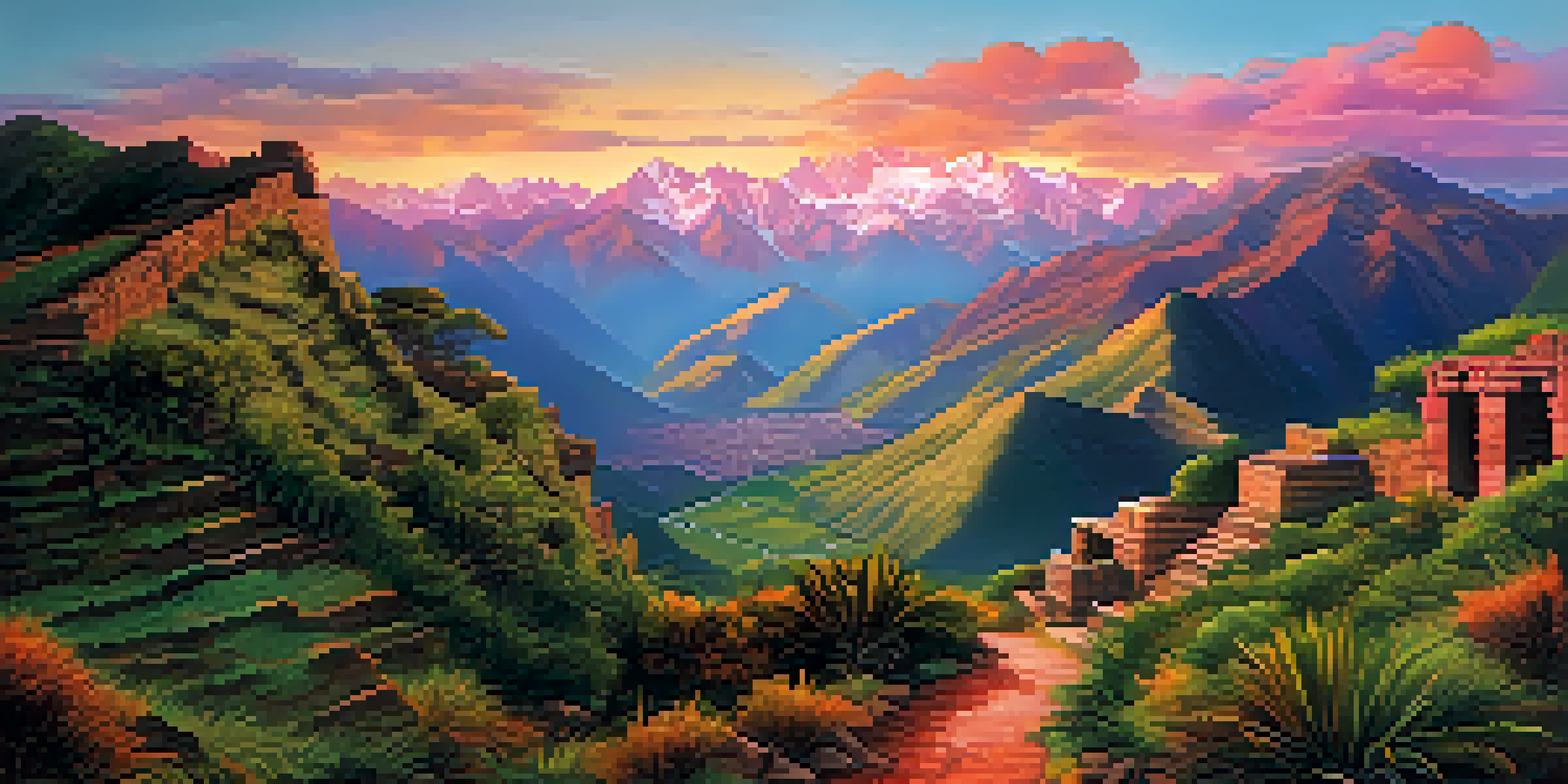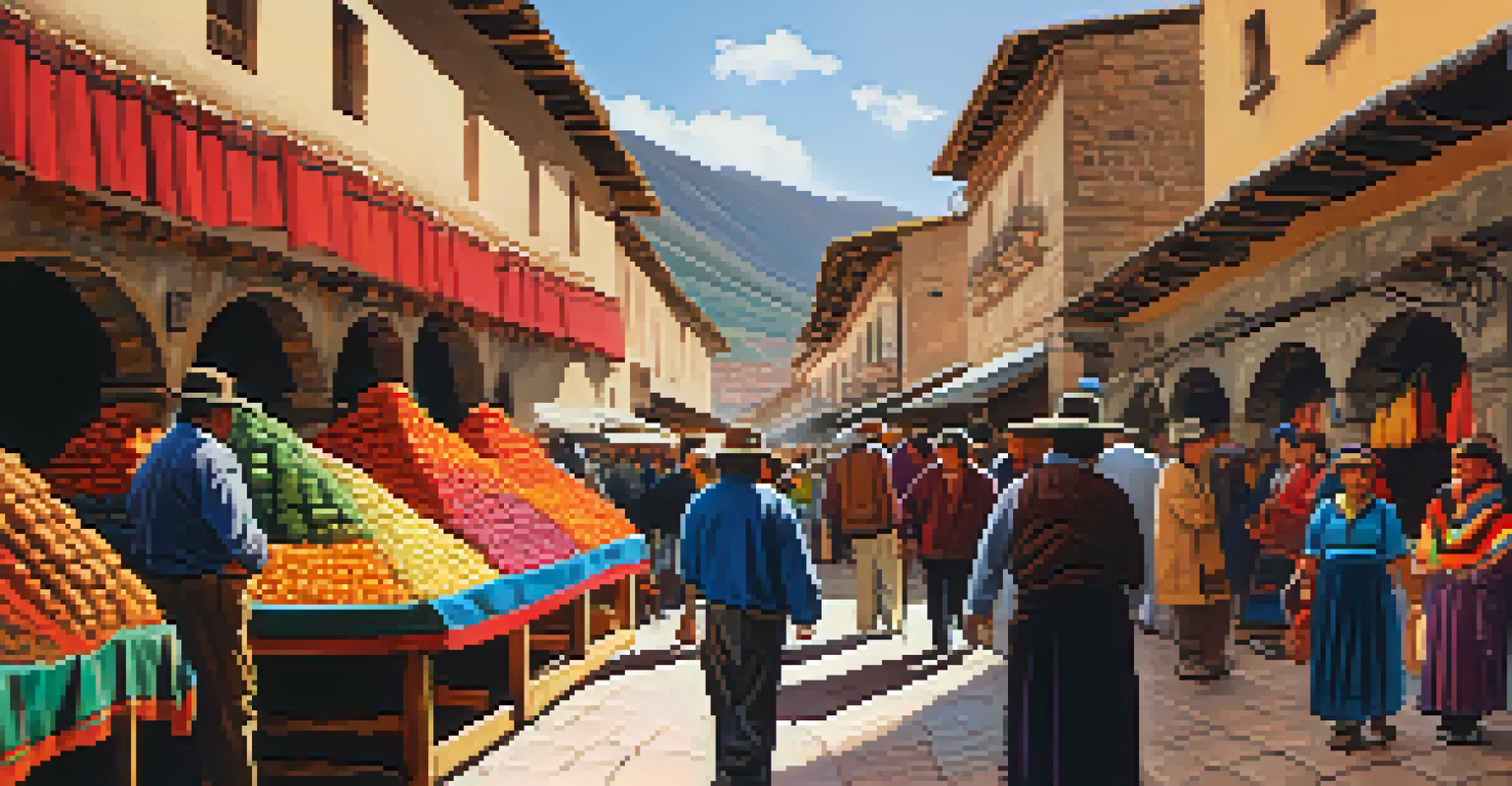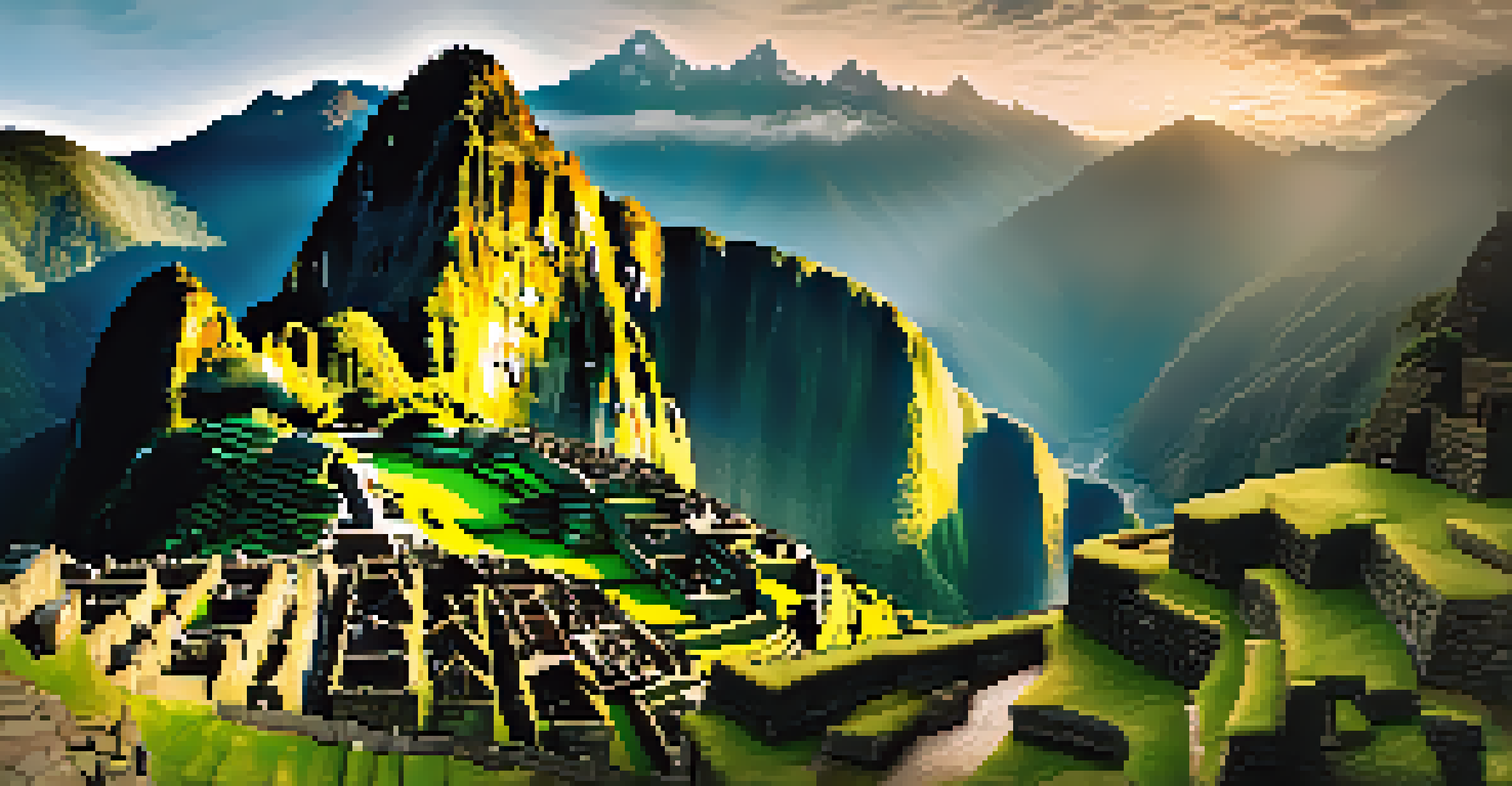The Origins of Tourism in Peru: A Historical Perspective

Ancient Civilizations: The First Travelers
Long before modern tourism existed, ancient civilizations like the Incas were the original travelers of Peru. They traversed the rugged Andes mountains, establishing trade routes that connected distant communities. These journeys were not just practical; they were cultural exchanges that laid the groundwork for future tourism.
Traveling – it leaves you speechless, then turns you into a storyteller.
The Incas' impressive road systems, such as the famous Inca Trail, facilitated travel across vast territories. This network allowed for the exchange of goods, ideas, and traditions, creating a rich tapestry of cultural heritage. These routes, still visible today, hint at the historical significance of movement in this region.
As we look back, it’s clear that these early explorers set the stage for tourism in Peru. Their journeys resonate with the spirit of adventure that modern tourists experience, showcasing the enduring allure of this breathtaking landscape.
Spanish Conquest: A Shift in Travel Dynamics
The arrival of Spanish conquistadors in the 16th century marked a dramatic shift in Peru's travel landscape. With their exploration came a wave of European interest in the rich resources and cultures of the Andean region. This new influx of travelers brought both opportunities and challenges for the indigenous populations.

Cities like Cusco became focal points for these explorers, transforming into hubs of colonial power. The blend of Spanish and indigenous cultures created a unique historical narrative that continues to attract visitors today. Travelers seeking to understand this complex heritage find it woven into the very fabric of Peru's cities and traditions.
Ancient Travel Shaped Peru's Tourism
Early civilizations like the Incas set the foundation for cultural exchanges that evolved into modern tourism.
Thus, the Spanish conquest not only altered the course of Peruvian history but also laid the groundwork for future tourism. The allure of exploring the remnants of this period draws countless visitors eager to uncover the stories that shaped modern Peru.
19th Century Explorers: The Birth of Modern Tourism
The 19th century ushered in a new era of exploration, with adventurous travelers setting their sights on Peru. Figures like Hiram Bingham, who rediscovered Machu Picchu in 1911, played a pivotal role in sparking global interest in Peru's archaeological treasures. This period marked the transition from exploration to tourism as we know it today.
The journey not the arrival matters.
Travelers began to document their journeys, sharing stories and photographs that captivated audiences back home. The allure of Peru's ancient ruins and stunning landscapes drew more visitors, eager to experience the magic of this South American gem. This growing fascination laid the foundation for Peru's tourism industry.
The 19th century thus stands as a turning point, where exploration morphed into tourism. The romanticized tales of discovery continue to inspire modern travelers, reminding us of the timeless appeal of Peru's remarkable heritage.
20th Century: Institutionalizing Tourism
As the 20th century progressed, Peru began to recognize the economic potential of tourism. The establishment of the Ministry of Tourism in the 1960s signaled a new commitment to promoting the country as a travel destination. This institutional support helped to develop infrastructure, making it easier for visitors to explore the rich landscapes and cultural sites.
Air travel advancements also played a significant role in boosting tourism. With the increase in international flights, more travelers could easily access Peru's iconic sites, such as the Amazon rainforest and the Nazca Lines. This accessibility opened up a world of possibilities for adventure and exploration.
Cultural Heritage Attracts Visitors
Peru's rich cultural heritage, from ancient ruins to local festivals, draws tourists seeking authentic experiences.
By institutionalizing tourism, Peru was able to enhance its global presence as a travel destination. This era marked the beginning of a more structured approach to tourism, paving the way for the vibrant industry we see today.
Cultural Heritage: A Key Attraction
Peru's rich cultural heritage has become a cornerstone of its tourism appeal. From the ancient ruins of Machu Picchu to traditional festivals that celebrate indigenous customs, tourists are drawn to the stories that bring this country to life. These cultural experiences provide a deeper understanding of Peru's identity and history.
Local communities play a vital role in preserving these traditions, offering visitors authentic experiences that can't be replicated. Engaging with locals through food, crafts, and storytelling enriches the travel experience, making it more meaningful. It's a beautiful exchange where both travelers and locals benefit.
Thus, cultural heritage is not just a backdrop but rather a vibrant part of the tourism experience in Peru. It invites travelers to connect with the past while embracing the present, creating lasting memories.
Sustainable Tourism: A Modern Approach
In recent years, there has been a growing awareness of sustainable tourism practices in Peru. With the increasing number of visitors, the need to protect the environment and cultural sites has never been more crucial. Initiatives aimed at promoting responsible tourism have emerged, ensuring that future generations can enjoy Peru's wonders.
Sustainable tourism encourages travelers to engage with the environment and local communities respectfully. Activities such as eco-tours and community-based travel allow visitors to contribute positively while experiencing the beauty of Peru. This approach fosters a sense of responsibility and connection between tourists and the places they visit.
Sustainable Tourism is Essential
The shift towards sustainable tourism practices ensures the preservation of Peru's natural and cultural wonders for future generations.
Ultimately, sustainable tourism represents a shift towards a more conscious way of exploring Peru. It emphasizes the importance of preserving the natural and cultural heritage that makes this country so unique, ensuring that its allure endures for years to come.
The Future of Tourism in Peru
Looking ahead, the future of tourism in Peru is bright, thanks to its rich history and diverse offerings. As travel trends evolve, there is an opportunity to further develop unique experiences that celebrate both culture and nature. This adaptability will ensure that Peru remains a top destination for travelers seeking adventure and authenticity.
Moreover, the rise of digital platforms has made it easier for travelers to plan their journeys and connect with local experiences. This shift allows for a more personalized approach to travel, catering to individual interests and preferences. The digital age presents exciting possibilities for showcasing Peru's treasures to a global audience.

In conclusion, the future of tourism in Peru holds great promise. By embracing its historical roots and adapting to modern trends, Peru can continue to enchant travelers and share its incredible stories with the world.